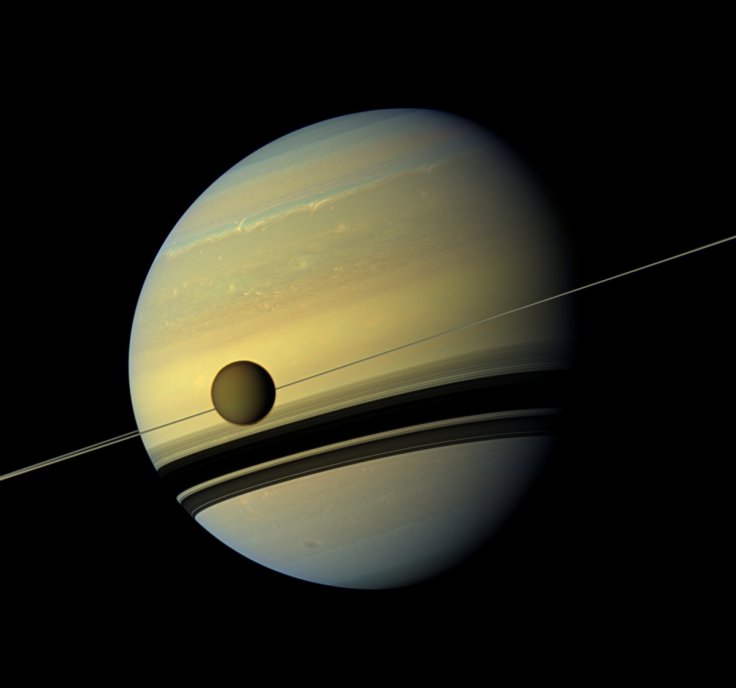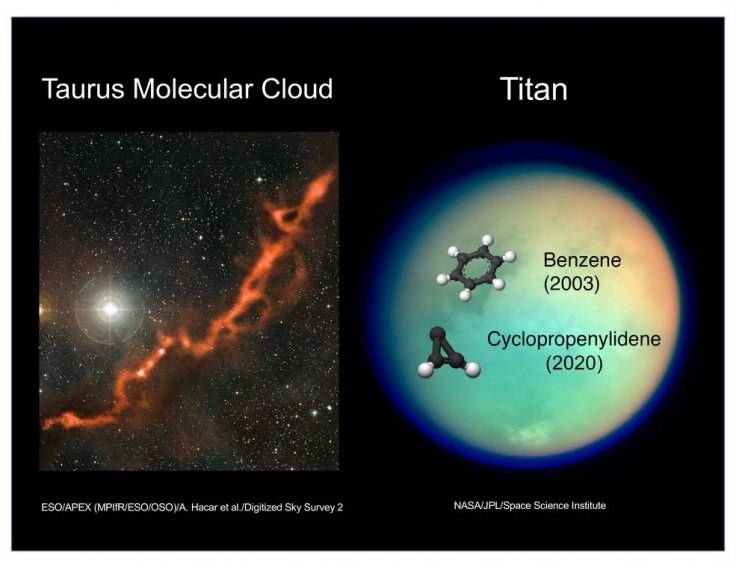Scientists have discovered an extremely rare carbon-based molecule in the atmosphere of Saturn's moon Titan that can only exist on earth in laboratory conditions. What makes this finding more interesting is that this rare molecule—cyclopropenylidene (C3H2)—has never before been found in an atmosphere, in the Solar System, or elsewhere.
As per astronomers the only place where C3H2 can remain stable is the cold void of interstellar space. Melissa Trainer, a NASA Goddard astrobiologist who is also one of the chief scientists, set to investigate the moon in the upcoming Dragonfly mission said, "We think of Titan as a real-life laboratory where we can see similar chemistry to that of ancient Earth when life was taking hold here."
The astrobiologist also said that scientists will be looking for bigger molecules than C3H2, but "we need to know what's happening in the atmosphere to understand the chemical reactions that lead complex organic molecules to form and rain down to the surface."

'Weird Molecule'
The C3H2, which is also described by NASA scientists as a "very weird little molecule" that doesn't last long outside a controlled environment, because it reacts very quickly with other molecules and then forms other compounds but after that, it's no longer cyclopropenylidene. However, in interstellar space, this molecule can hang around alone, because compounds do not interact much.
But when it comes to Titan, it is very different from interstellar space—it has hydrocarbon clouds, hydrocarbon lakes, and a predominantly nitrogen atmosphere, with a little bit of methane. Titan's atmosphere is four times thicker than the earth's atmosphere.
A team of researchers led by planetary scientist Conor Nixon of Goddard Space Flight Centre used the Atacama Large Millimeter/submillimeter Array (ALMA) in Chile almost four years ago to investigate titan's atmosphere and to find out organic molecules. They detected an unknown chemical signature in the upper atmosphere high above the surface.

After the researchers compared it to a database of chemical profiles, they noticed that the molecule was none other than C3H2. According to scientists, it is possible that the thinness of the atmosphere at that altitude contributes to the cyclopropenylidene's survival, but why only on Titan is a mystery.
"When I realized I was looking at cyclopropenylidene, my first thought was, 'Well, this is really unexpected'. Titan is unique in our Solar System. It has proved to be a treasure trove of new molecules," said Nixon.
As per the scientists, Saturn's moon Titan is already a hive of organic chemical activity and astronomers are trying to figure out if it is habitable. Rosaly Lopes, a geologist at NASA's Jet Propulsion Laboratory said, "We want to know what compounds from the atmosphere get to the surface, and then, whether that material can get through the ice crust to the ocean below because we think the ocean is where the habitable conditions are."









